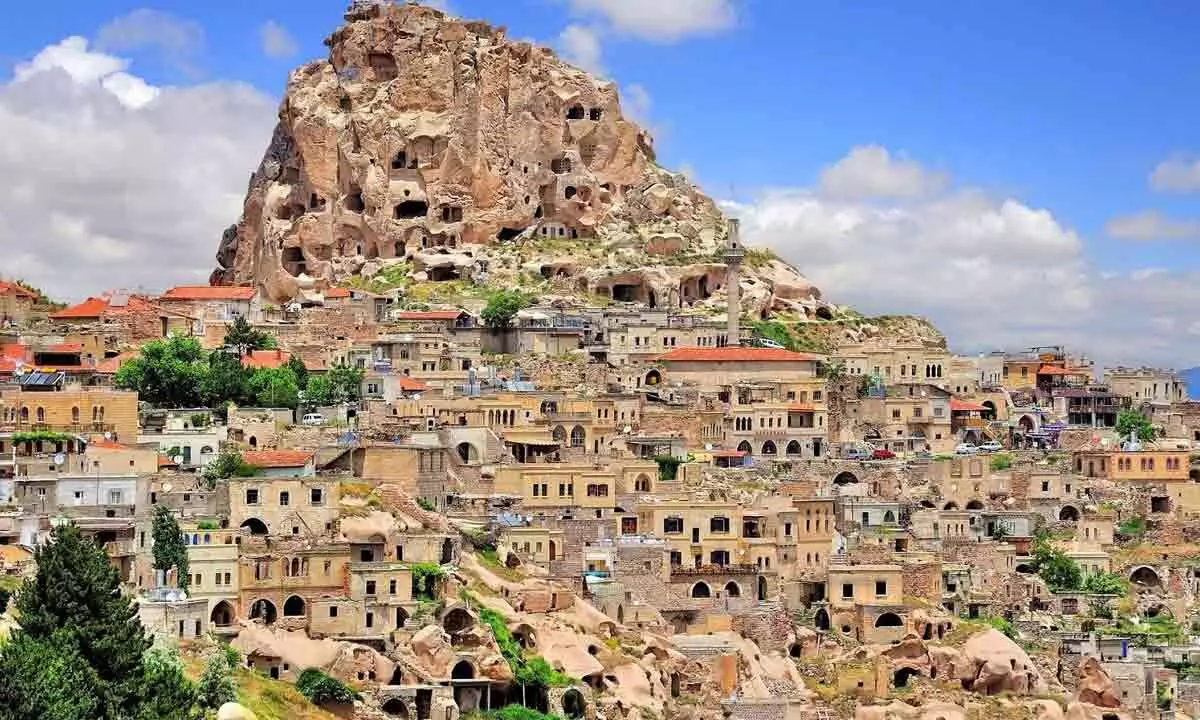Planning to visit Cappadocia? Discover Land of wonders

Cappadocia is a historical region in Central Anatolia, Turkey, known for its unique moon-like landscape, underground cities, cave churches, and houses carved in the rocks.
Cappadocia is a historical region in Central Anatolia, Turkey, known for its unique moon-like landscape, underground cities, cave churches, and houses carved in the rocks. The region is largely in the provinces of Nevşehir, Kayseri, Aksaray, Kırşehir, Sivas and Niğde.
Cappadocia’s landscape includes dramatic expanses of soft volcanic rock, shaped by erosion into towers, cones, valleys, and caves. The region is also home to Göreme National Park and the Rock Sites of Cappadocia, which are UNESCO World Heritage Sites.
If you’re planning to visit Cappadocia, some of the popular tourist attractions include:
Göreme Open Air Museum: A complex of medieval painted cave churches carved out by Orthodox monks between the 10th and 12th centuries.
Uçhisar Castle: A fortress carved into a natural rock formation that offers panoramic views of Cappadocia.
Ihlara Valley: A scenic canyon with a river running through it that is home to several Byzantine-era rock-cut churches.
History
The underground cities in Cappadocia are a remarkable example of human ingenuity and resilience. They were built by different groups of people over many centuries, mainly for the purpose of hiding and protection from enemies.
The first underground cities were probably constructed by the Phrygians, an ancient Indo-European people who lived in central Anatolia from the 8th to the 6th century BCE. They carved their living spaces into the soft volcanic rock of the region, creating tunnels, chambers, and ventilation shafts.
The underground cities were later expanded and used by the early Christians during the Byzantine era, from the 4th to the 11th century CE. They were persecuted for their faith by the Roman Empire and later by the Muslim-Arab invaders. The underground cities provided them with a safe haven where they could practice their religion and preserve their culture. They added features such as churches, chapels, baptismal fonts, and Greek inscriptions to the underground cities12.
The underground cities continued to serve as shelters and fortifications for various groups of people throughout history, especially during times of war and conflict. For example, they were used by the Seljuk Turks in the 12th century, the Mongols in the 14th century, and the Ottoman Greeks in the 20th century2. They were also used as storage places for food and wine.
The underground cities were mostly abandoned and forgotten after the population exchange between Greece and Turkey in 1923, which relocated millions of people based on their ethnic and religious identity. They were rediscovered in 1963, when a resident of Derinkuyu found a hidden room behind a wall in his house, leading to the exploration of a vast underground city.
Today, some of the underground cities are open to visitors, who can marvel at their complex and sophisticated architecture. The most famous and impressive ones are Derinkuyu and Kaymakli, which are located south of Nevsehir. They have multiple levels that can accommodate thousands of people, as well as facilities such as stables, kitchens, wells, and traps12. They are part of the UNESCO World Heritage Site of Cappadocia1.














